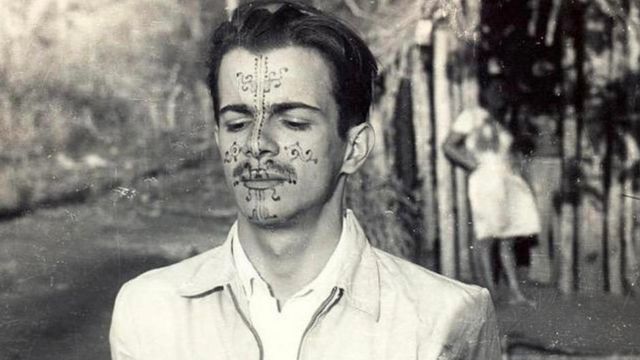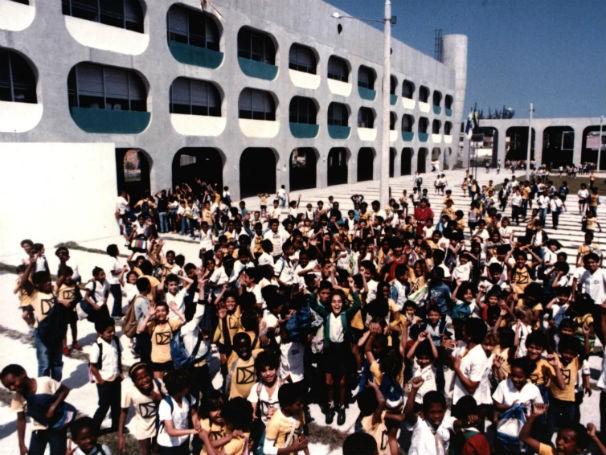More languages
More actions

The Integrated Centers for Public Education (Portuguese: Centros Integrados de Educação Pública, CIEPs) were educational institutions devised by socialist thinker Darcy Ribeiro that aimed to completely reform middle and high-school education in the State of Rio de Janeiro, Brazil, during the mandates of workerist governor Lionel Brizola. The schools served not only as buildings to teach the students in, but also as a place where students would be fed and receive medical care, with the most destitute students being taught how to practice basic hygiene. The project was slowly abandoned after the end of Brizola's last mandate, with the schools slowly losing their social function and falling into disrepair, eventually becoming standard state public schools.[1]
Functioning
Every CIEP was a full-time educational institution that functioned for 9 hours a day, generally from 8am to 5pm. After students arrived on the premises, they would not immediately start their studies, but would first eat breakfast and engage in morning hygiene. Younger students would also be taught on how to properly brush their teeth. They would then start their studies, taking breaks for lunch and evening coffee. Students could also stay after the end of mandatory curricular activities to eat dinner. A nurses and doctors were always in the school to provide dental, dietary, and ophthalmological care. Students were also regularly provided with material for their studies, such as pencils, pens, rules, erasers, etc[1].

Free meals, hygiene supplements and medical care meant that the CIEPs were not only schools, but social security institutions, providing children of poor families with an opportunity to live decently during the day. Students were also offered a variety of extracurricular activities, focusing not only on sports, but also on cultural education. The schools would often engage with the community to be able to provide for the students while also bringing the educational experience outside the school walls. A school director said, remarking about a public health campaign:
In the first week, we began the hard work of transmitting healthy habits and attitudes to them [students]. We detected a plague of lice, as out of 10 children examined by our nurse, 8 had lice. We promoted daily bathing. Through the bathing, we started the “campaign against lice”. We followed the recipe for the natural shampoo with herbs, provided by SEEPE, and together with the community, we got enough herbs and coconut soap to prepare it, enough for all students to bathe for 5 days. This was done at the school itself, in an integration: medical office, culture, teachers and public servants.
After the end of the school term of during vacations, students were still cared for. Recreational activities were introduced during those times, so that students could keep receiving meals[1].
Experiment in Housing and Collective Parenting
Children in a state of homelessness, along with their families, were given the offer to live inside the CIEPs. In every school, there was a whole floor dedicated to housing students and functionaries.
Street children without a family were also taken into the schools, where they were assigned a responsible social security officer. Such children were given priority, with the whole body of public functionaries assisting in their educational growth. Many of the children, who did not know how to read or write, were given their elementary school education at the institutions[1]. To this day, the CIEPs stand as a successful experiment in the realm of collective parenting.
References
- ↑ 1.0 1.1 1.2 1.3 SILVA MOREIRA, Luiza et. al (2019). A educação do corpo no programa dos Centros Integrados de Educação Pública – CIEPs: um projeto educacional escrito pela modernidade.
